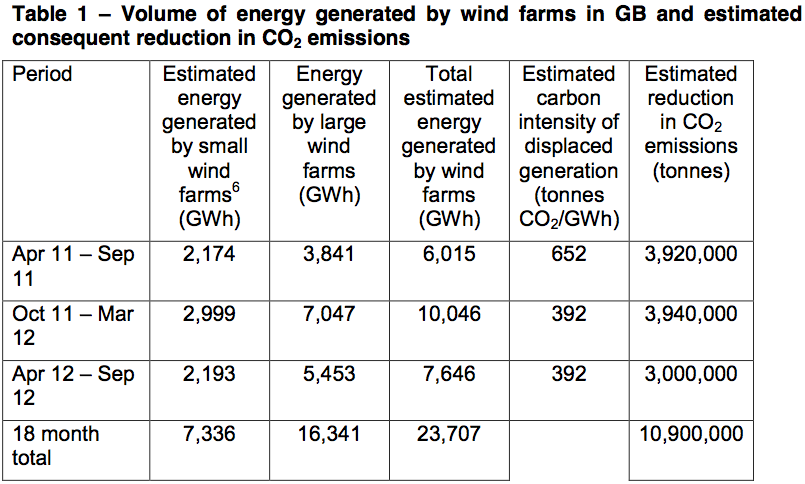Squirreled away beneath a recent Telegraph report on the subtleties of badger-culling in the UK was this intriguing morsel of wind energy news, which would seem to challenge the idea that intermittent energy sources such as wind play havoc with grid management. For the 23,700 gigawatt-hours of electrical energy generated by wind in the UK between April 2011 and September 2012, only 22 GWh of electrical energy from fossil fuels "was needed to fill the gaps when the wind didn't blow," it reports. Gizmag contacted the UK National Grid to find out the details.
The Telegraph's figures come from National Grid Head of Energy Strategy and Policy, Richard Smith, speaking at the Hay Festival between May 23 and Jun 2. Gizmag has learned that he was drawing from a National Grid document sent to the Scottish Parliament in response to its own report of Nov 23 2012, entitled Report on the achievability of the Scottish Government's renewable energy targets.

Table 1 of the National Grid's document states that, according to its figures, wind farms generated 23,707 GWh of electricity over the 18 months in question.

Meanwhile, Table 2 of the report shows the energy provided by the National Grid's Short Term Operating Reserve, and how much of that was due to wind energy output being lower than forecast. Of the 246 GWh provided by the Reserve for the same period, 22 GWh are thought to be due to the wind not blowing as forecast.
In other words, for every 1,000 GWh of wind energy generated in that 18-month period, less than 1 GWh was required to meet shortfalls due to the wind not blowing as expected. "As expected" may be the crucial words missing from the Telegraph's summary. What about the energy required when the wind isn't blowing, when you know it isn't going to blow, you may well ask? But, similar to the classic falling tree scenario, is a GWh of energy truly "lost" if you weren't expecting to generate it in the first place? At the very least, the National Grid's figures would seem to challenge the notion that wind energy throws the grid into significant disarray.
Further, because of the carbon implications of these figures, the data simultaneously challenge another knock-on concern about wind energy – one raised in paragraph 121 of the Scottish Parliament's report. It specifically calls on the National Grid and the UK Government to clarify "whether 'reducing the carbon intensity' of the grid takes account of electricity which is generated from thermal [i.e. fossil fuel] plant but, due to despatch decisions, does not make it as far as the grid, whether this is expected to be a continuing issue and, if so, for how long."
In other words, the Scottish Parliament's specific question is whether wind energy can actually waste energy. If, say, Walney 1 suddenly spins into action, is this reducing the efficiency of fossil fuel power stations because they've produced energy which is suddenly surplus to requirements? Could such inefficiencies wholly or partly wipe out carbon emission reductions made by having wind turbines in the first place?
Though the reductions in carbon emissions due to wind energy generation (and increases due to the wind not blowing as forecast) are only estimated in the National Grid report, the figures are striking, if not unexpected given what we've already learned. Over the 18-month period, the 23,707 GWh of wind energy generated resulted in an estimated reduction in CO2 emissions of 10.9 million tonnes. Meanwhile the "intermittency impact" of the wind not blowing as expected was an additional 8,800 tonnes of CO2. "The report concludes that this effect causes only a small effect on the carbon intensity of thermal plant generation which is less than 1 percent of the benefit of carbon reductions from wind farms," it says, somewhat conservatively. The National Grid's own figures suggest that the effect on carbon emissions of wind intermittency is actually less than a tenth of a percent of the overall benefit of wind power.
The reports in question are available on the Scottish Parliament website: Report on the achievability of the Scottish Government's renewable energy targets (PDF); National Grid evidence (PDF).
Via The Telegraph






